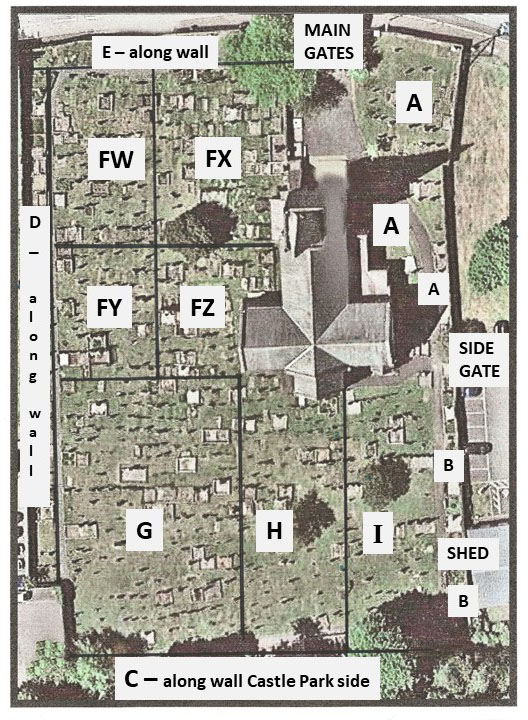|
Bangor Abbey Graveyard is a record of the
social, economic and political history of Bangor
and the surrounding district over at least 300
years.
Until
the late 19th century, all
denominations from a wide area were buried in
the graveyard. The visitor may wish to note
that most of the 17th and 18th
century stones are situated close to the east
end and south side of the church.
Prior to assuming its present size in the early
17th century, the graveyard of the
Augustinian abbey was very much larger,
evidenced by bones and fragments of stones
discovered under Church Street, Abbey Street and
Castle Park.
The
occupations shown on many of the stones show us
that the abbey served a wide cross-section of
society.
There are memorials to custom men and pirates,
ambassadors and factory owners, rebels and
planters, clergy and crooks!
As you walk around
the graveyard you may note some rather quaint
variations in spelling on many of the stones
prior to the late 18th century. The
delicate and intricate carving on slate
headstones of the 1770 – 1830 period is well
worthy of notice.
The inscriptions
testifying the deaths of whole families in the
nineteenth century are particularly moving.
From some of the
stones may be gleaned various snippets of local
history, reflecting the changing fortunes and
character of Bangor. Its position as a port of
some consequence in the 18th century
is recalled by the graves of two revenue
officers (Blackburn
and Kelly), and the Colvill stone recounts the
loss of the ship Amazon in 1780. As can be seen
from the headstones of James Dunlap and Archibel
Wilson, the events of 1798 touched Bangor as the
rest of North Down and Ards peninsula.
There are many interesting headstones throughout
the graveyard, not least those of ancestors
which will be most meaningful to family members. |
 |
|
